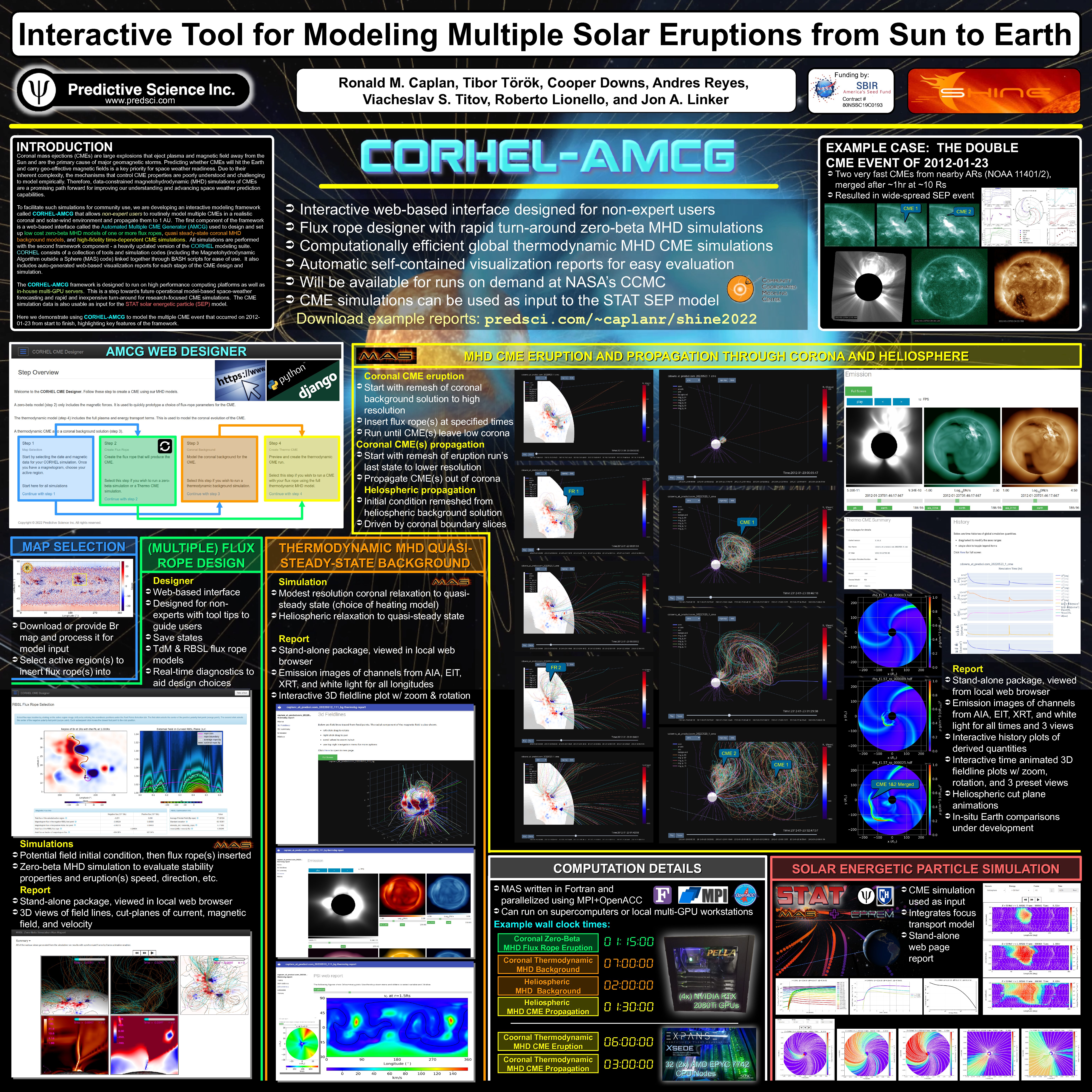Authors: Ronald M. Caplan (Predictive Science Inc.), Tibor Torok (Predictive Science Inc.), Cooper Downs (Predictive Science Inc.), Andres Reyes (Predictive Science Inc.), Viacheslav Titov (Predictive Science Inc.), Roberto Lionello (Predictive Science Inc.), Jon A. Linker (Predictive Science Inc.)
Coronal mass ejections (CMEs) are large explosions that eject plasma and magnetic field away from the Sun and are the primary cause of major geomagnetic storms. As such, predicting in advance whether CMEs will hit the Earth and carry geo-effective magnetic fields is a key priority for space weather prediction and readiness. However, due to their inherent complexity, the mechanisms that control CME kinematics (speed, direction, and rotation) and their internal magnetic properties remain poorly understood and challenging to empirically model. For this reason, data-driven and data-constrained magnetohydrodynamic (MHD) simulations of CMEs are one promising path forward for improving our scientific understanding of CMEs and bolstering our next generation of space weather prediction capabilities.
To facilitate such simulations, we are developing an interactive and highly automated MHD modeling framework called CORHEL-AMCG that allows users to routinely model multiple observed CMEs in a realistic coronal and solar-wind environment and to propagate them to 1 AU. The first component of the framework consists of a web-based interface called the Automated Multiple CME Generator (AMCG) to design and set up low cost simplified (zero-beta) MHD models of multiple flux ropes, quasi steady-state coronal MHD background models, and high-fidelity time-dependent CME simulations. All simulations are performed through the second component – a heavily updated paired version of the CORHEL modeling suite that includes auto-generated web-based visualization reports for each stage of the CME design and simulation.
The CORHEL-AMCG framework is designed to allow non-expert users to routinely model multiple CMEs, and to run the simulations on in-house multi-GPU servers. This provides a step towards future operational model-based space-weather forecasting, as well as allowing rapid and inexpensive turn-around for research-focused CME simulations. The CME output is also made compatible as input for use in the STAT solar energetic particle (SEP) model, allowing for SEP modeling of the events.
Here we demonstrate using CORHEL-AMCG to model the multiple CME event that occurred on 2012-01-23. This event had two fast CMEs that occurred shortly after each other, which then interacted/collided in the corona within 10 solar radii of the surface. We show the CORHEL-AMCG pipeline for this event from start to finish, highlighting key features of the framework.


